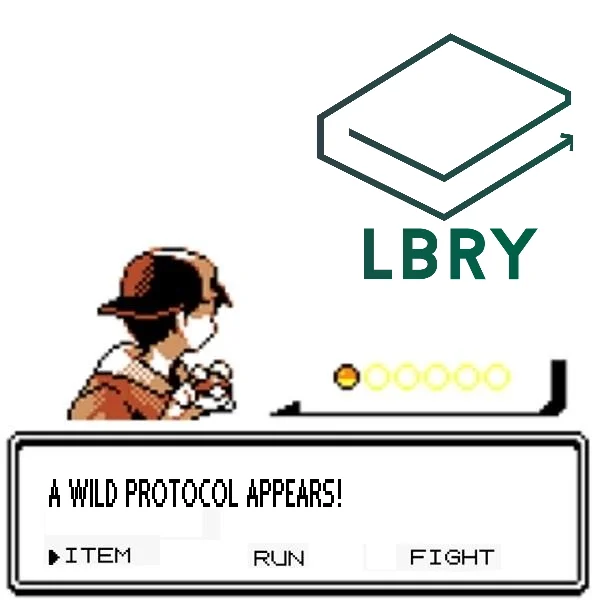Blockchain Is Love, Blockchain Is Life
Jeremy Kauffman • Jan 10 2018
(Protocols Not Platforms - Part 2 of 2)
Blockchain technology currently has a hype to substance ratio rapidly approaching infinity. And as a team of people who are skeptical of 90+% of proposed blockchain uses, we're hesitant to contribute to that (ed.: wait until you see what I changed the title to).
But there's one area where we think it's plausible, if not likely, that blockchain will improve the world: the development of open standards and protocols, and consequently more user-friendly technology.
The Status Quo
In Part 1, we covered how existing tech companies demonstrate active hostility towards users. If you haven't read this or are not already convinced of this problem, start here.
To recap:
 When a service is developed as a protocol, there is no question that the abuse potential is lower, and the long-term user-experience is better. The problem is that frequently, a protocol never gets developed at all.
When a service is developed as a protocol, there is no question that the abuse potential is lower, and the long-term user-experience is better. The problem is that frequently, a protocol never gets developed at all.
The reason for that is the incentives in place. Building great technology takes time and effort, which means it takes money.
Tim Berners-Lee, who is widely credited as the father of the web, made a lot of people rich. But Tim wasn't one of them. That's because Tim created HTTP as a protocol. That meant Tim didn't own it, and Tim never profited from his amazing invention. So while protocols create better experiences, they often never get developed or deployed, because there is no funding or capital to drive the creation of them.
The What and Why Of Protocols
Just what do we mean when we say protocol? And how is it different from a platform? A platform is built on proprietary code running on servers controlled and managed by the company that created and owns the platform. It leaves the company fully in control.
Suppose I wanted to build my own interface for Facebook. Perhaps because I want actual control over what shows up on my news feed, rather than leaving it to Facebook's algorithms. Currently, it would be legally questionable for me to do this, and even it was legal, it would also be legal for Facebook to block my interface from loading "its" data.
But if Facebook was implemented as a protocol, it would be an open standard that anyone could follow. Anyone could write a Facebook view or a Facebook app. If Facebook, Inc. wanted to start acting hostile towards its users, people would simply stop using the apps released by Facebook, Inc. and instead use ones made by other parties.
To be clear: this is possible today. It's been possible for decades. There's no technological barrier to creating a Facebook Protocol, but barriers of economics and incentives that discourage people from doing so.
Enter Blockchain
Now, suppose we wanted to create Facebook Protocol in a world where blockchain exists. Let's call it PeopleChain.
PeopleChain is a blockchain database that stores the same data that Facebook would (i.e. it stores profiles, posts, user friendships, groups, etc.) But because it is a public blockchain database, no one owns it.
Anyone can access and read the data inside of it, and anyone can build services that use it (note: this doesn't imply some fully transparent version of Facebook, it would still be possible to have analogous privacy and access rules via encryption). And in addition, because it is a blockchain database, it means that it utilizes some kind of blockchain token.
This token has value in proportion to the usage and success of the network.
This is a revolution in the incentives around protocol creation.
It means that the people who discover and utilize a new protocol or network when it's just getting off the ground can reap substantial value by being there first. This solves the incentive problems around being a first-mover and softens the pain of using a service that probably won't be as feature-rich or slick as established competitors' options. It provides a source of funding for the development of the protocol. The creators can use the token to pay for the salaries and equipment required to get it started.
It also aligns incentives: the developers have incentive to make the protocol maximally successful. If they take actions that users dislike, the service can be forked, and anyone can create a new version.

For the first time ever, it's economically feasible for companies to compete to create the best technology instead of capture and then abuse their users. That's why we're building LBRY, and it's why we're open source. Anyone who's inspired to help us create a free, open internet is welcome to build apps on our protocol, or fork our project and strike out on their own if they think they can do it better than us. Real competition instead of a market in name only.
Want to join us? You can start by downloading the LBRY app, trying it out, and letting us know if you have any questions or suggestions to improve it. You can also join our chat or consider a more committed relationship. Together, we can build a better, freer internet.
